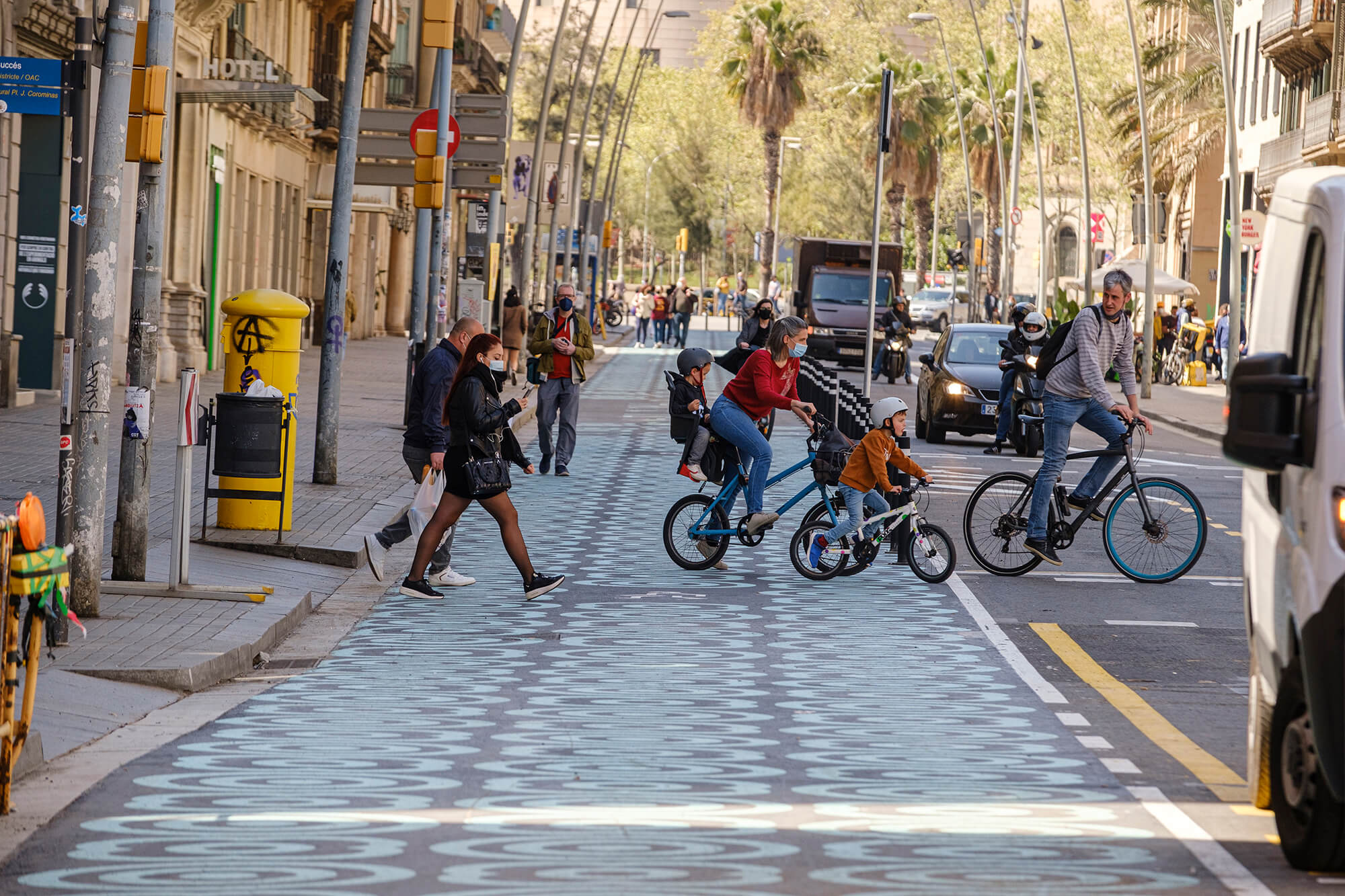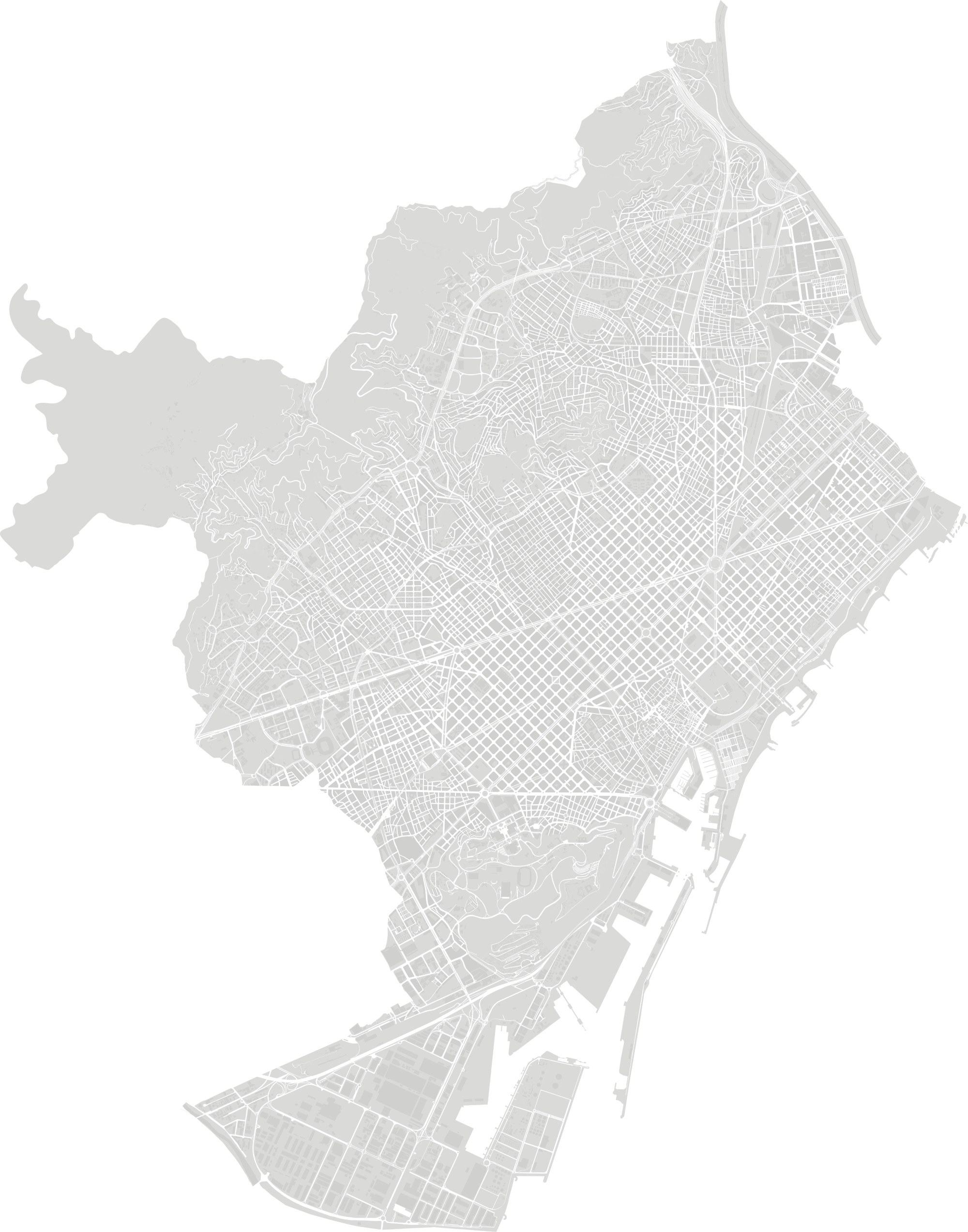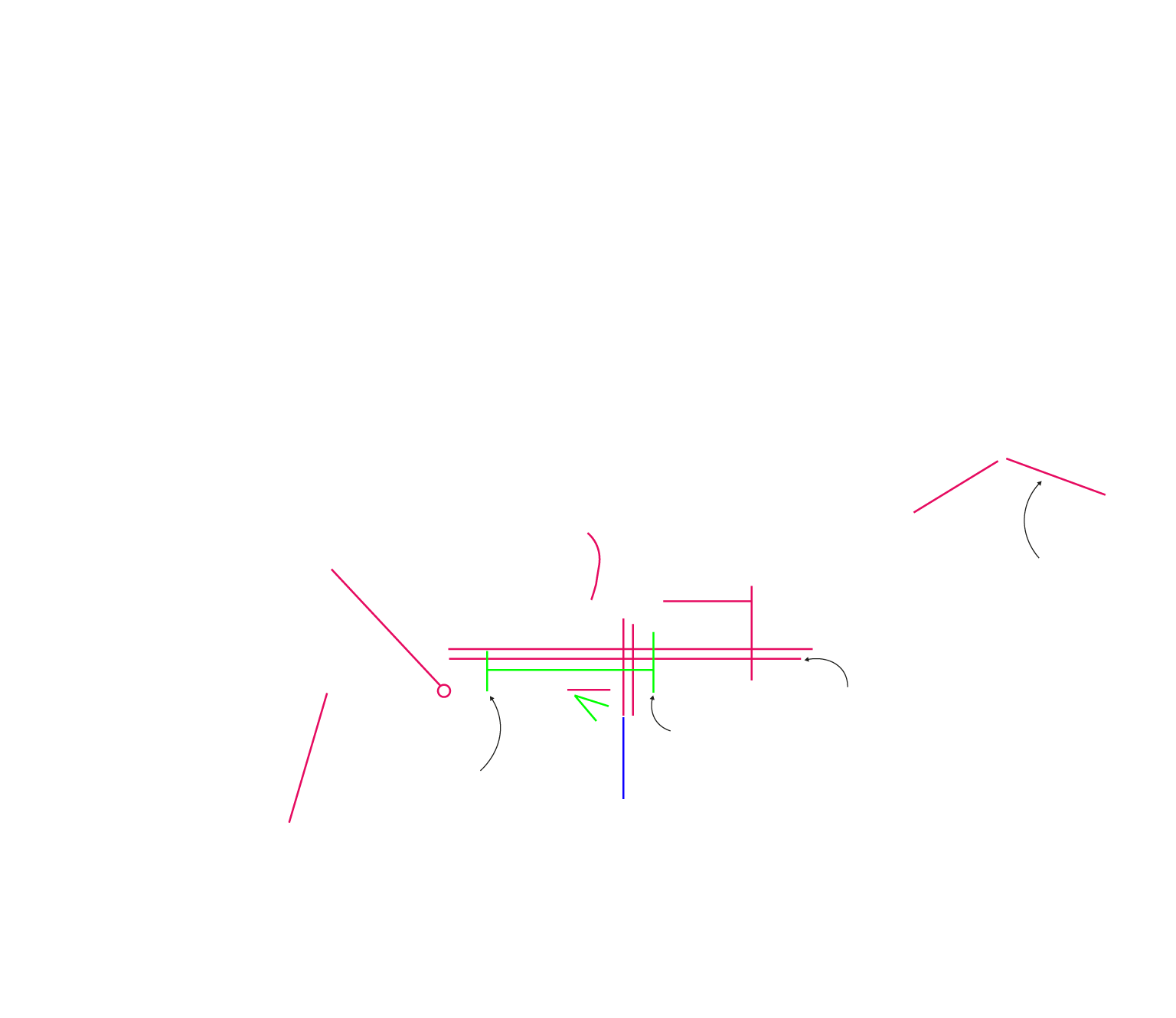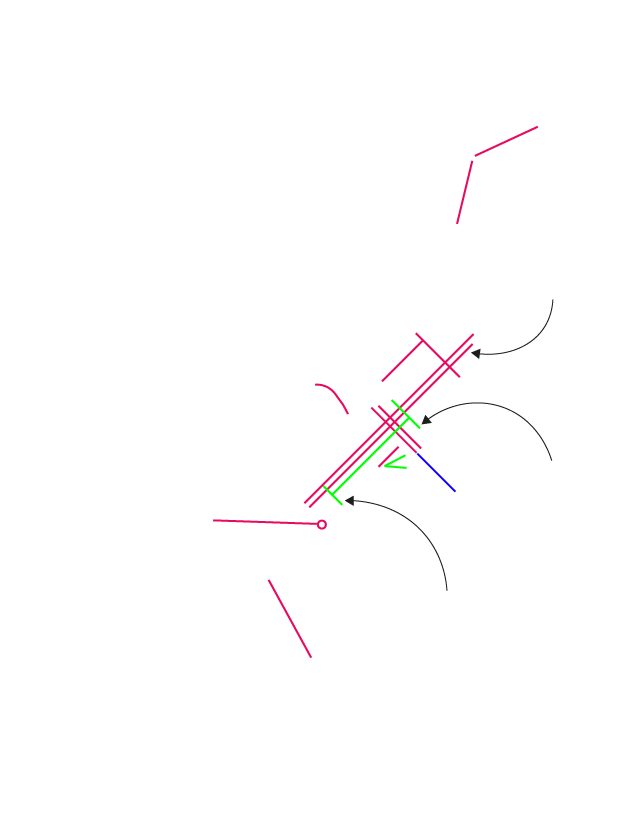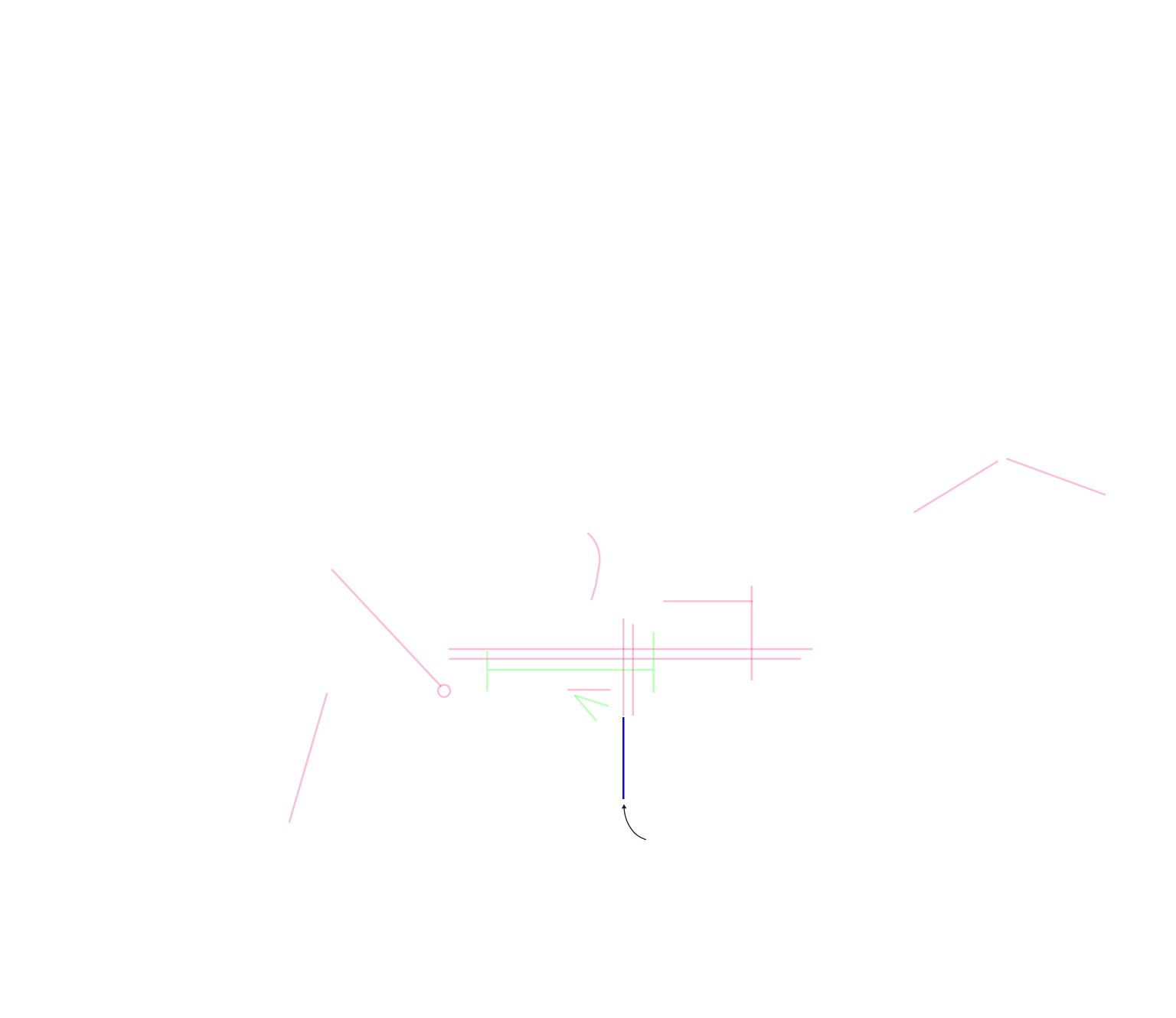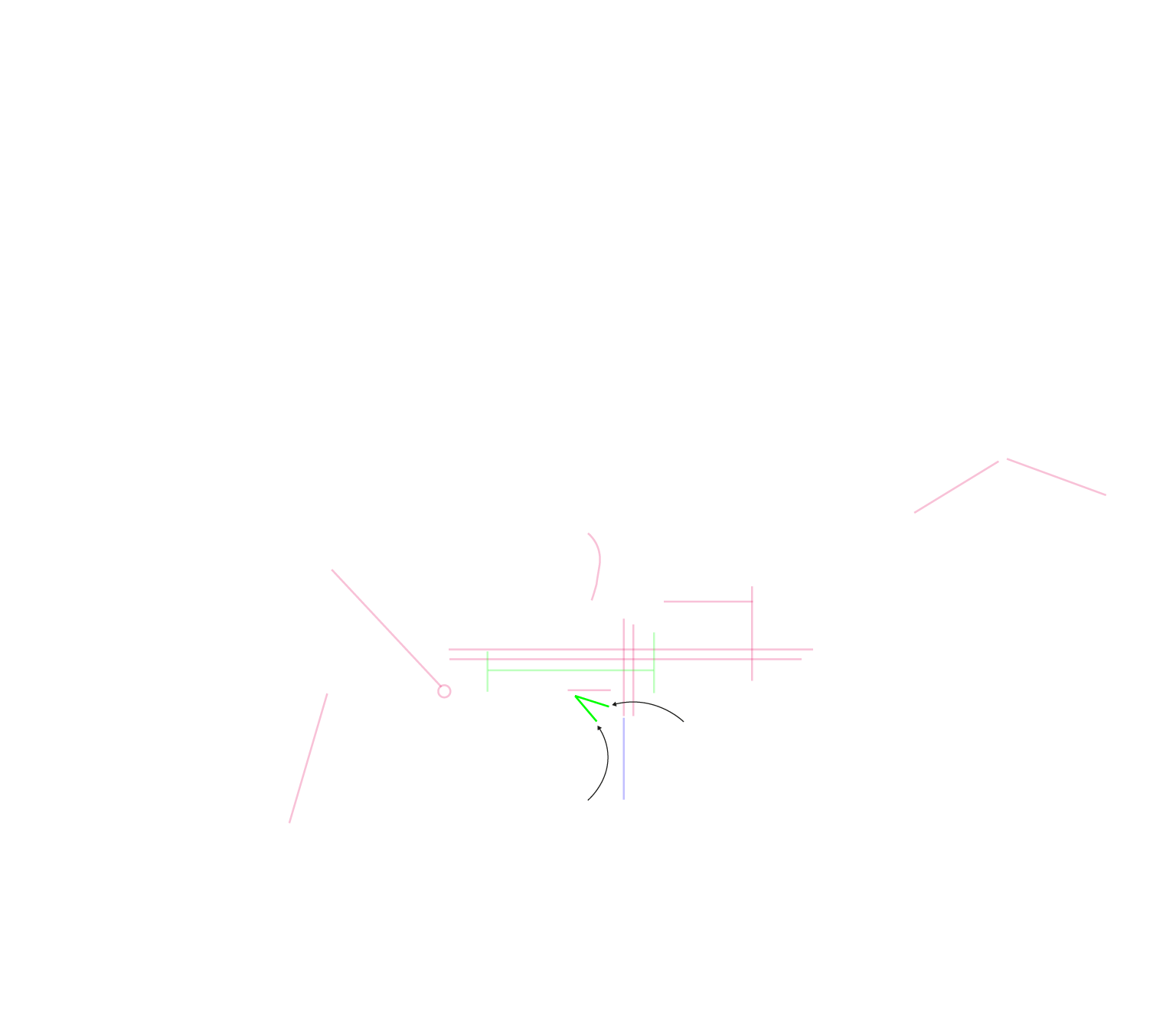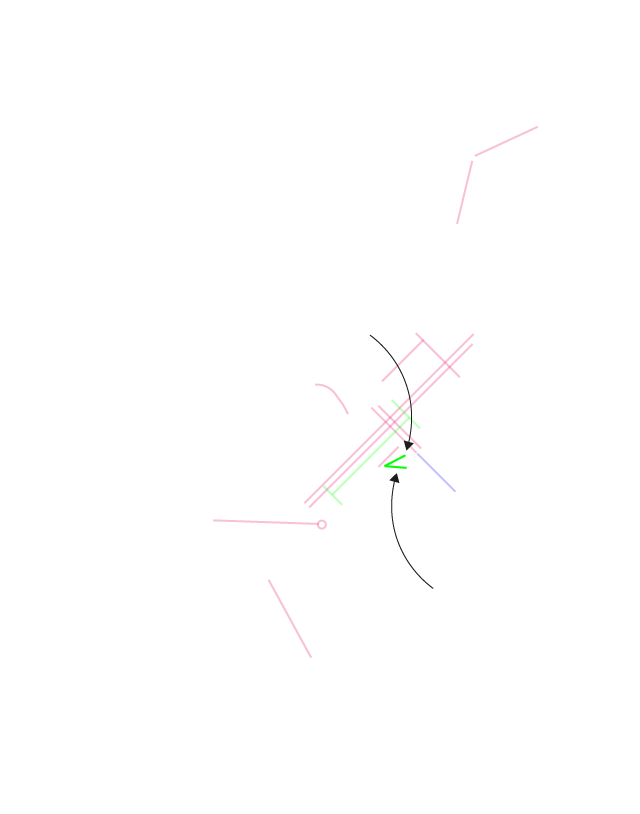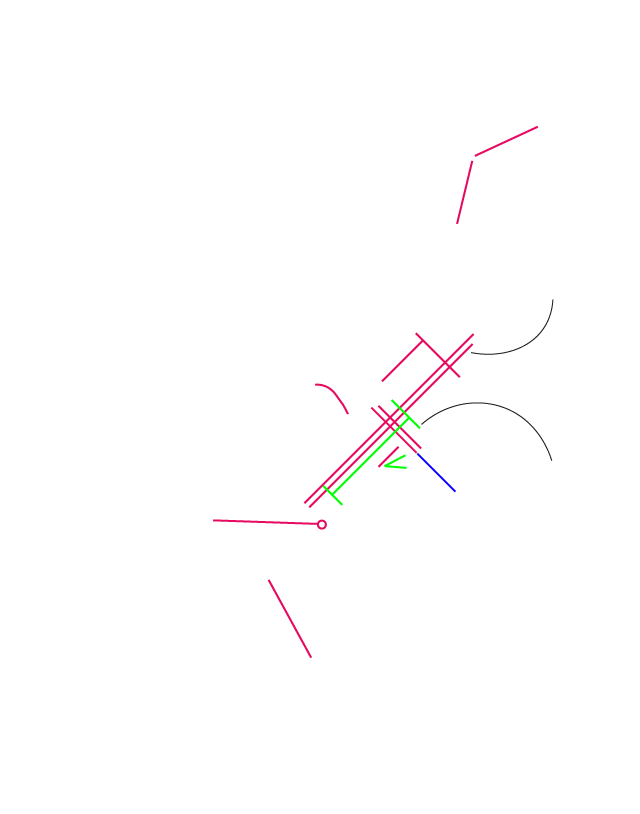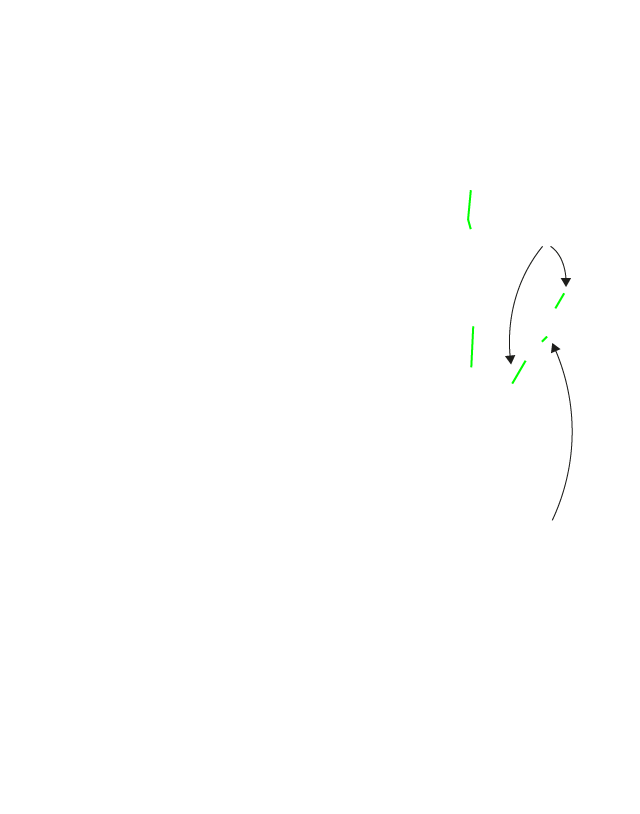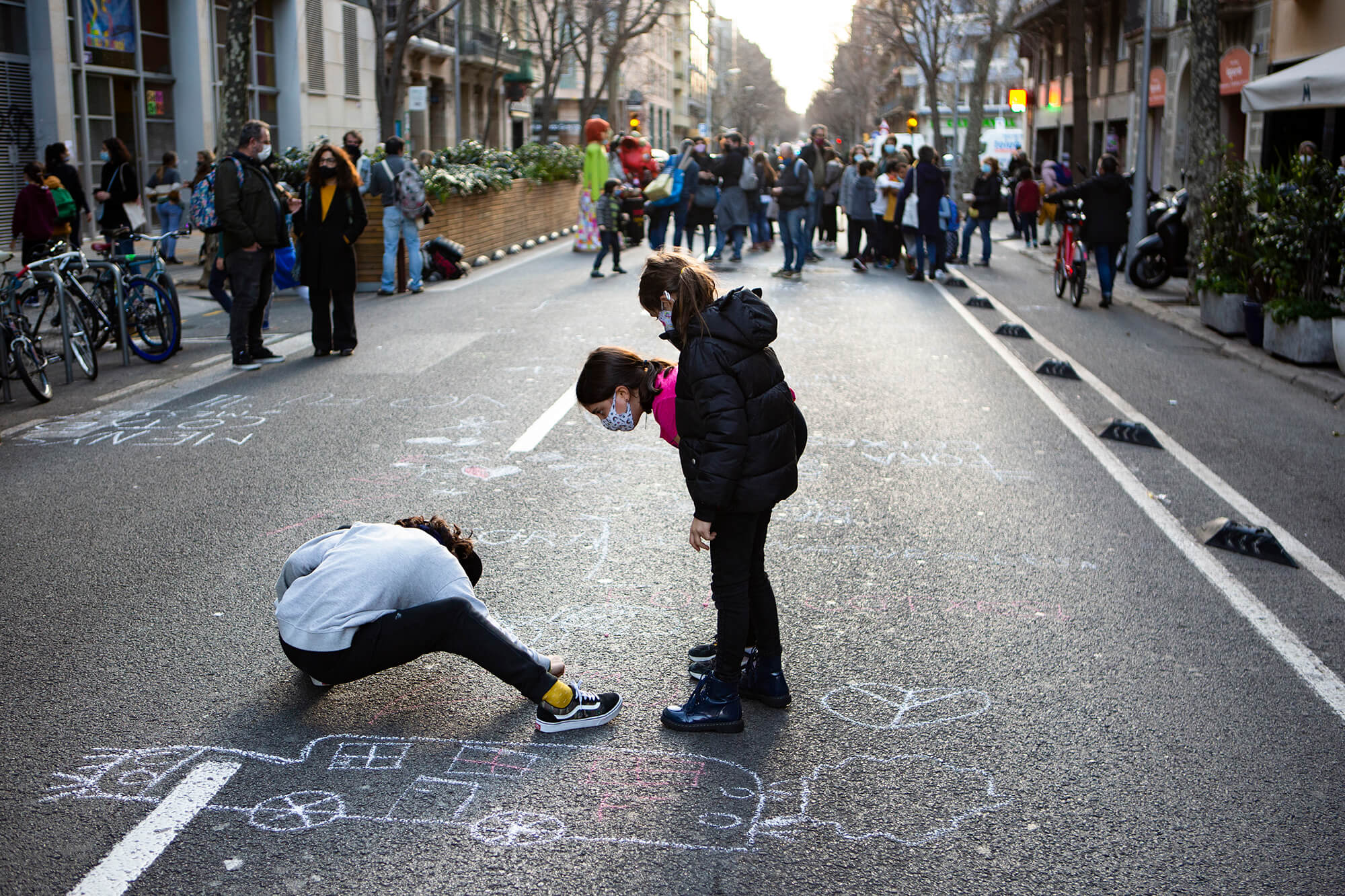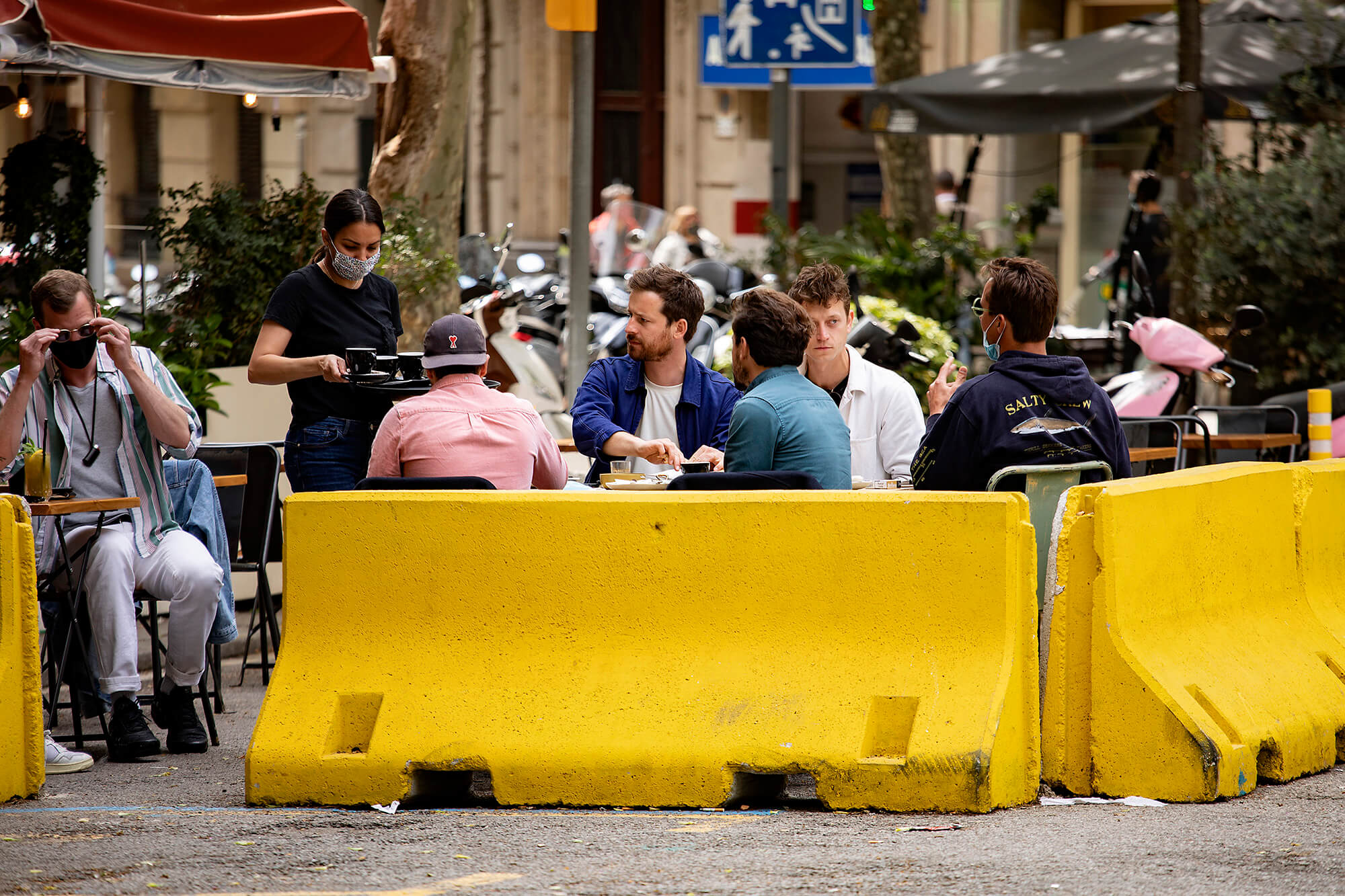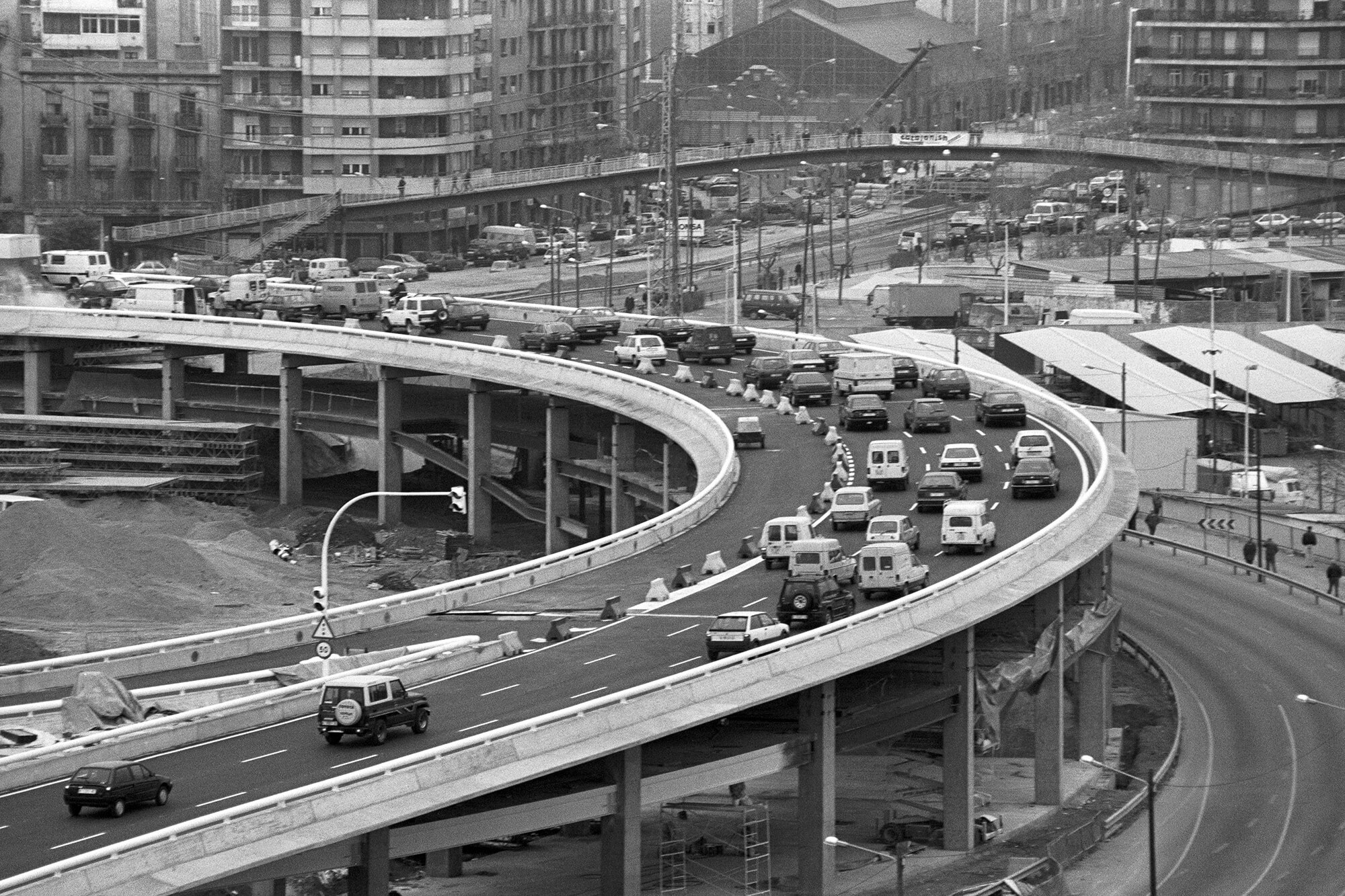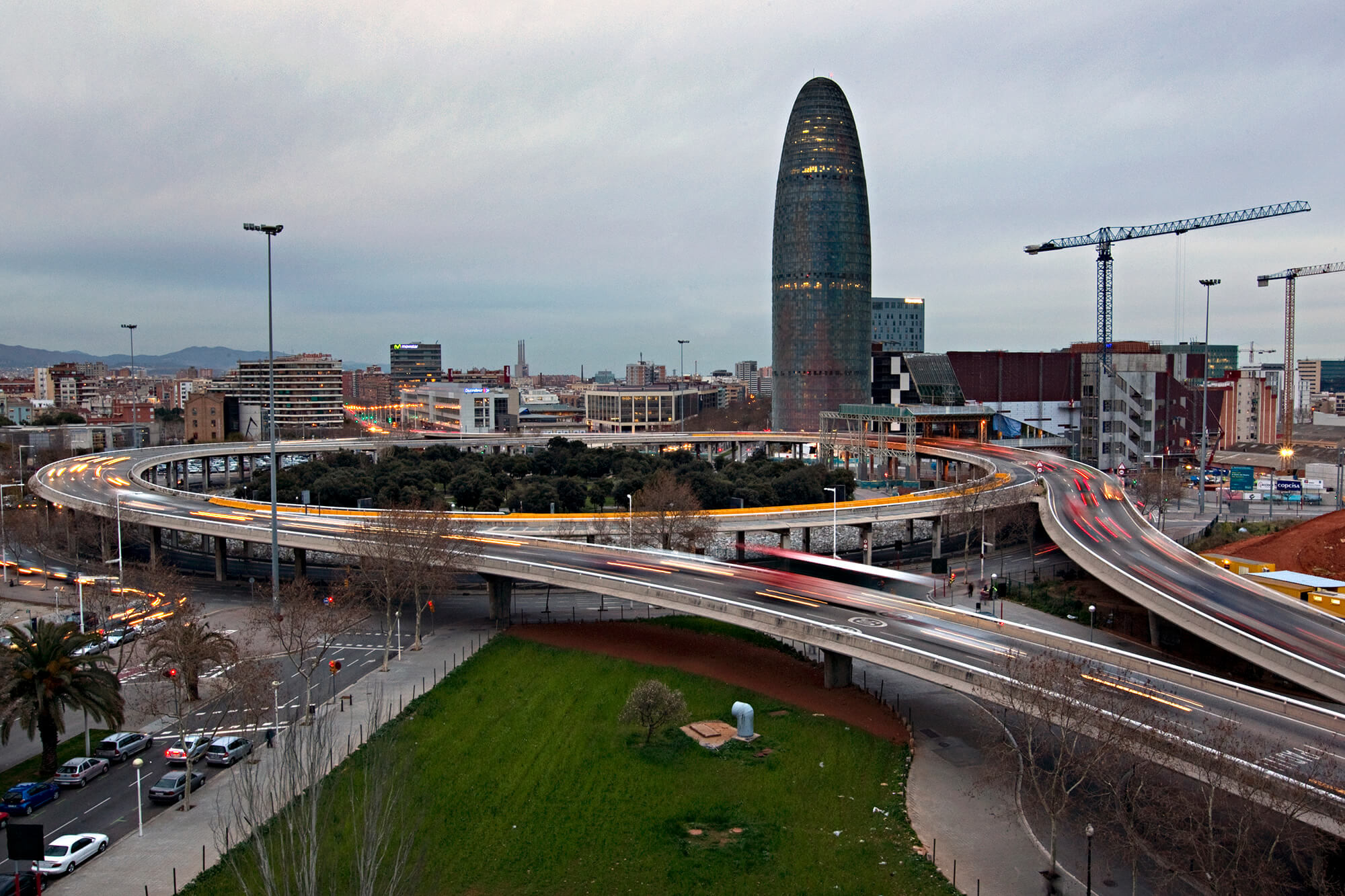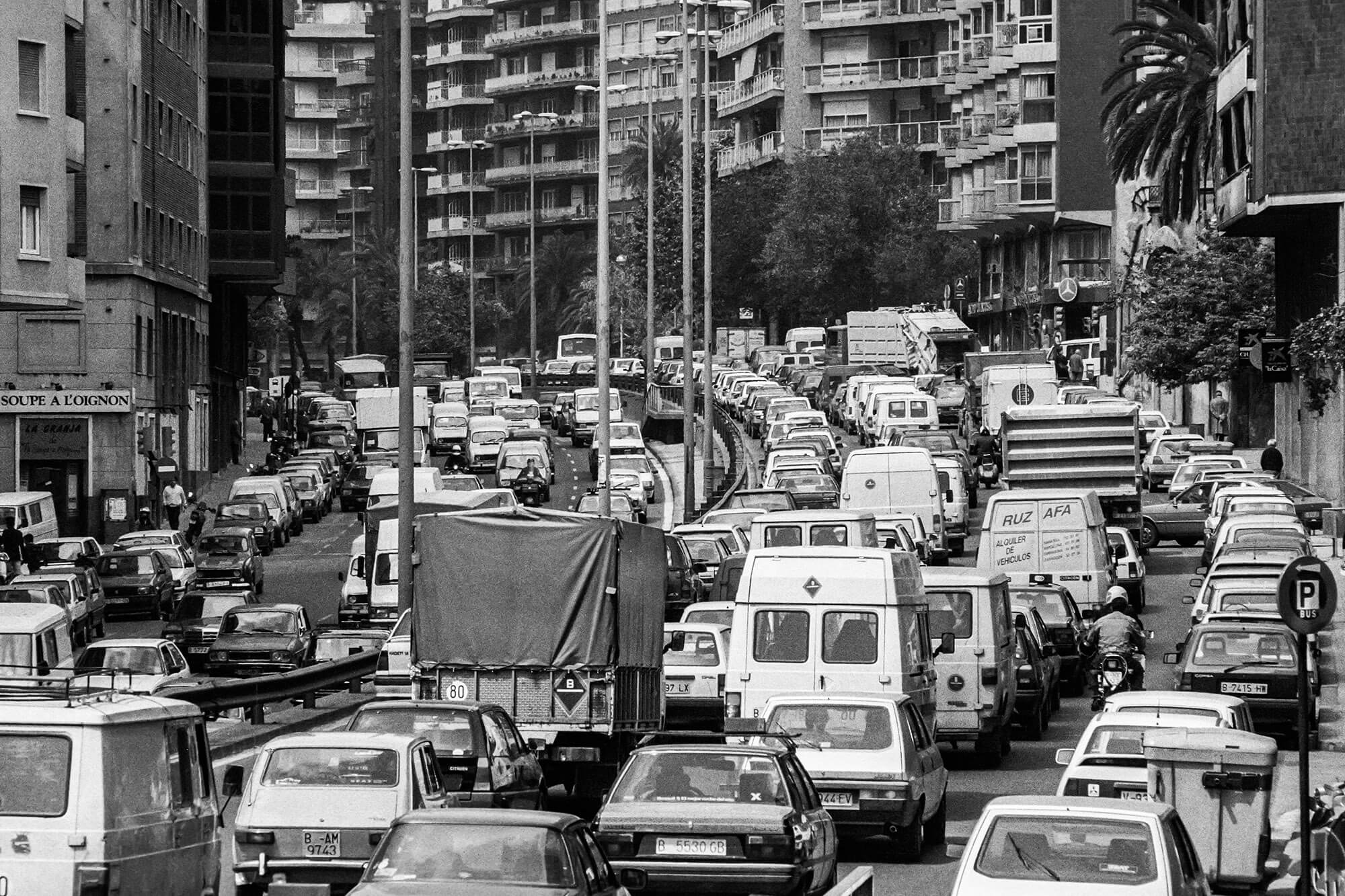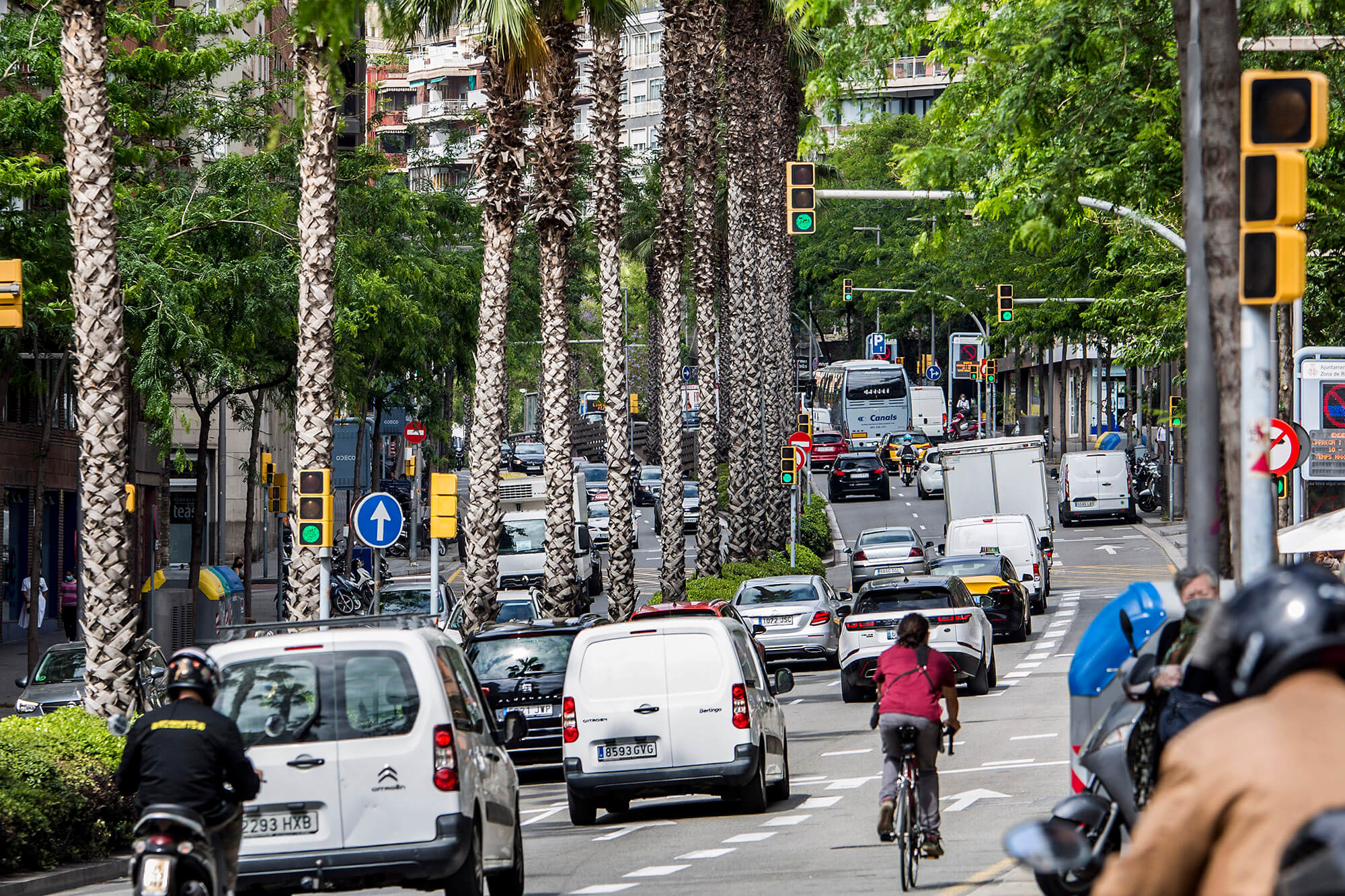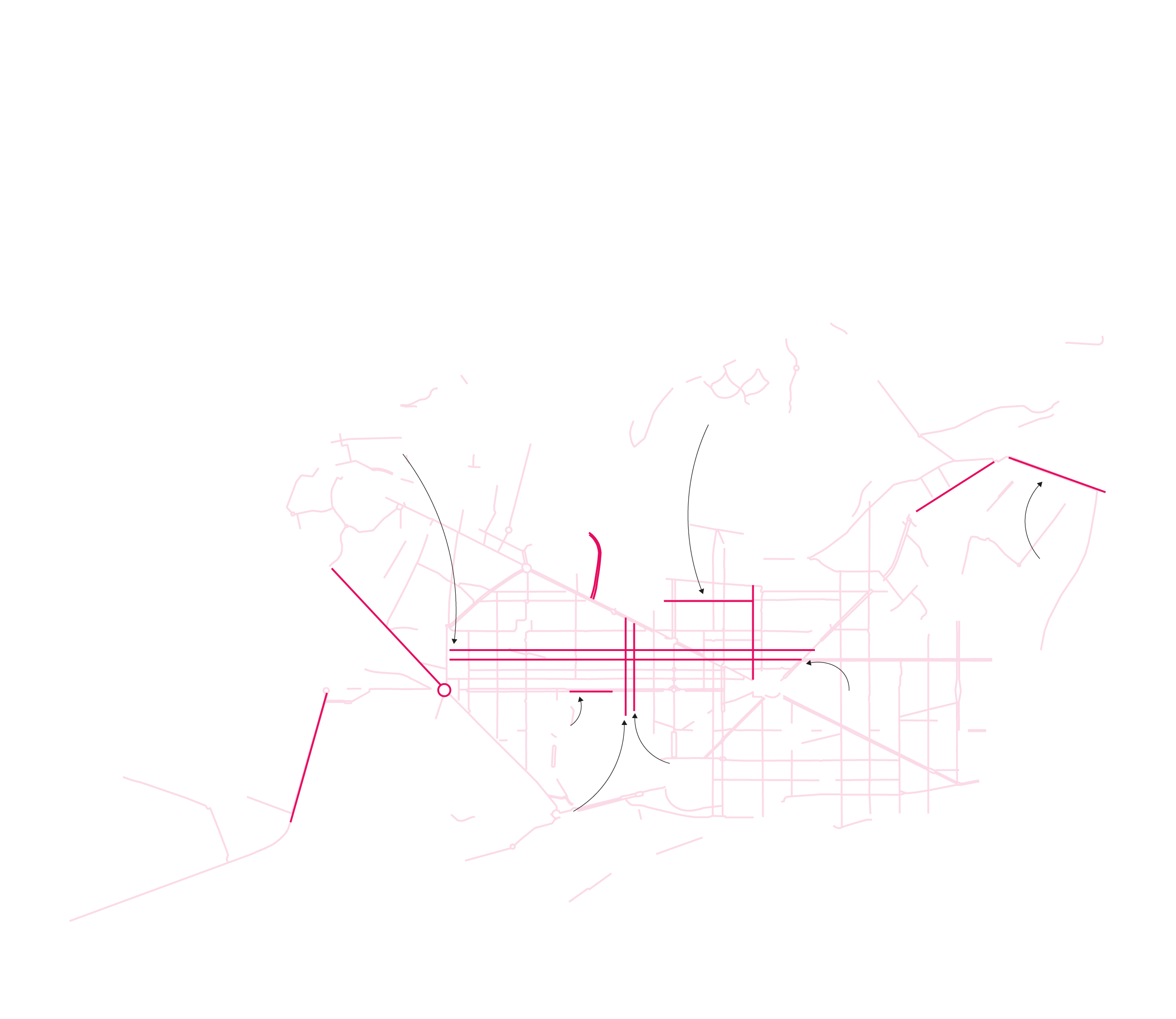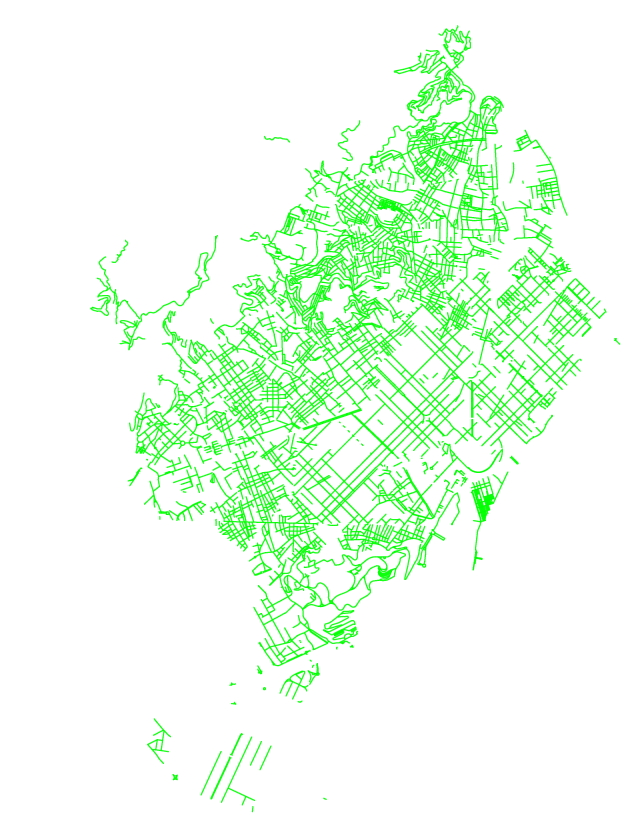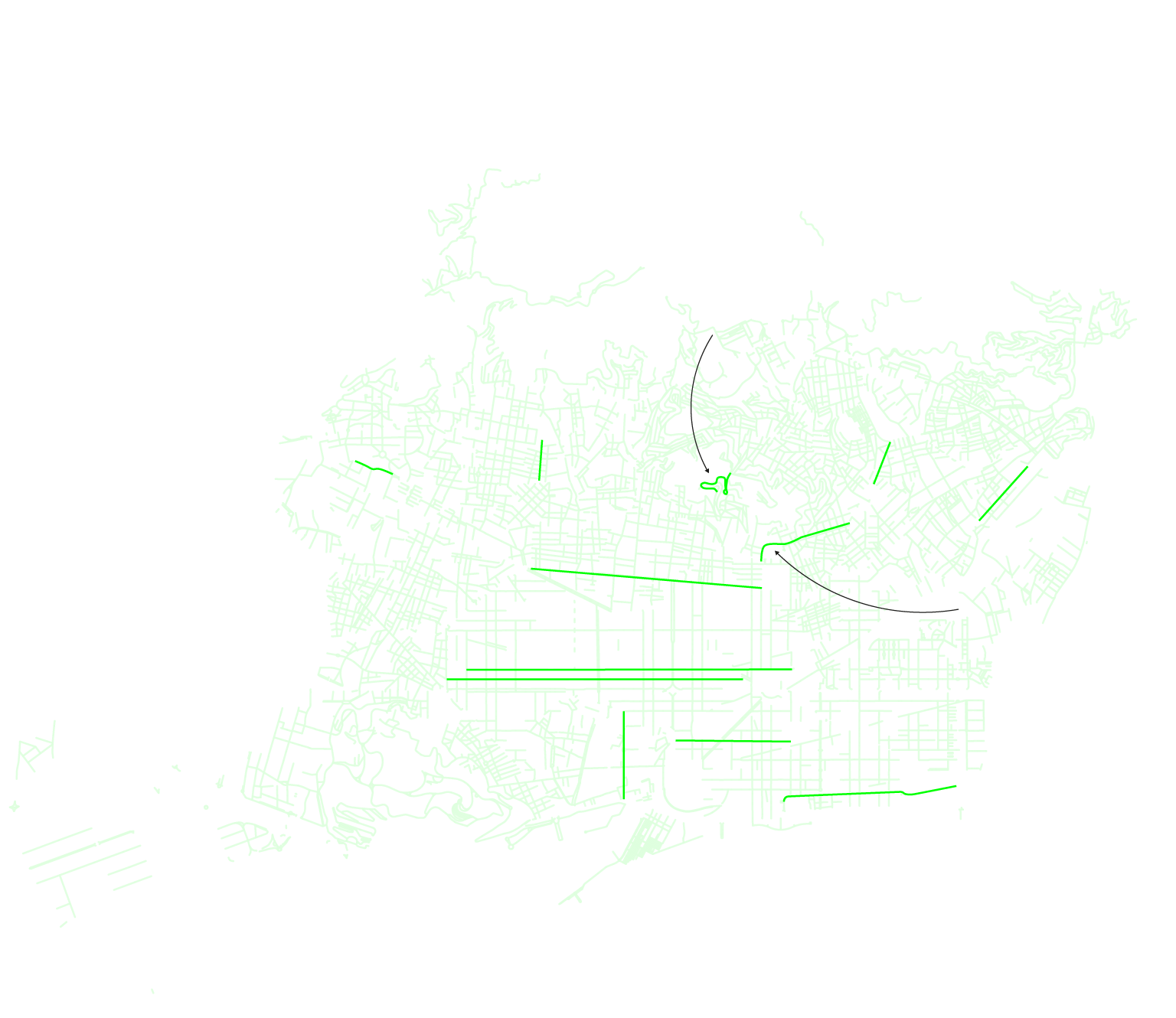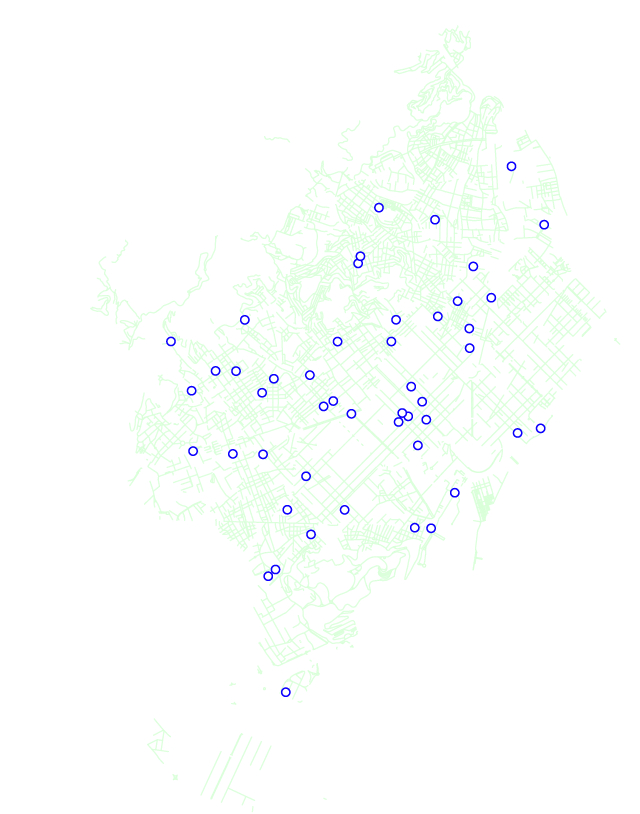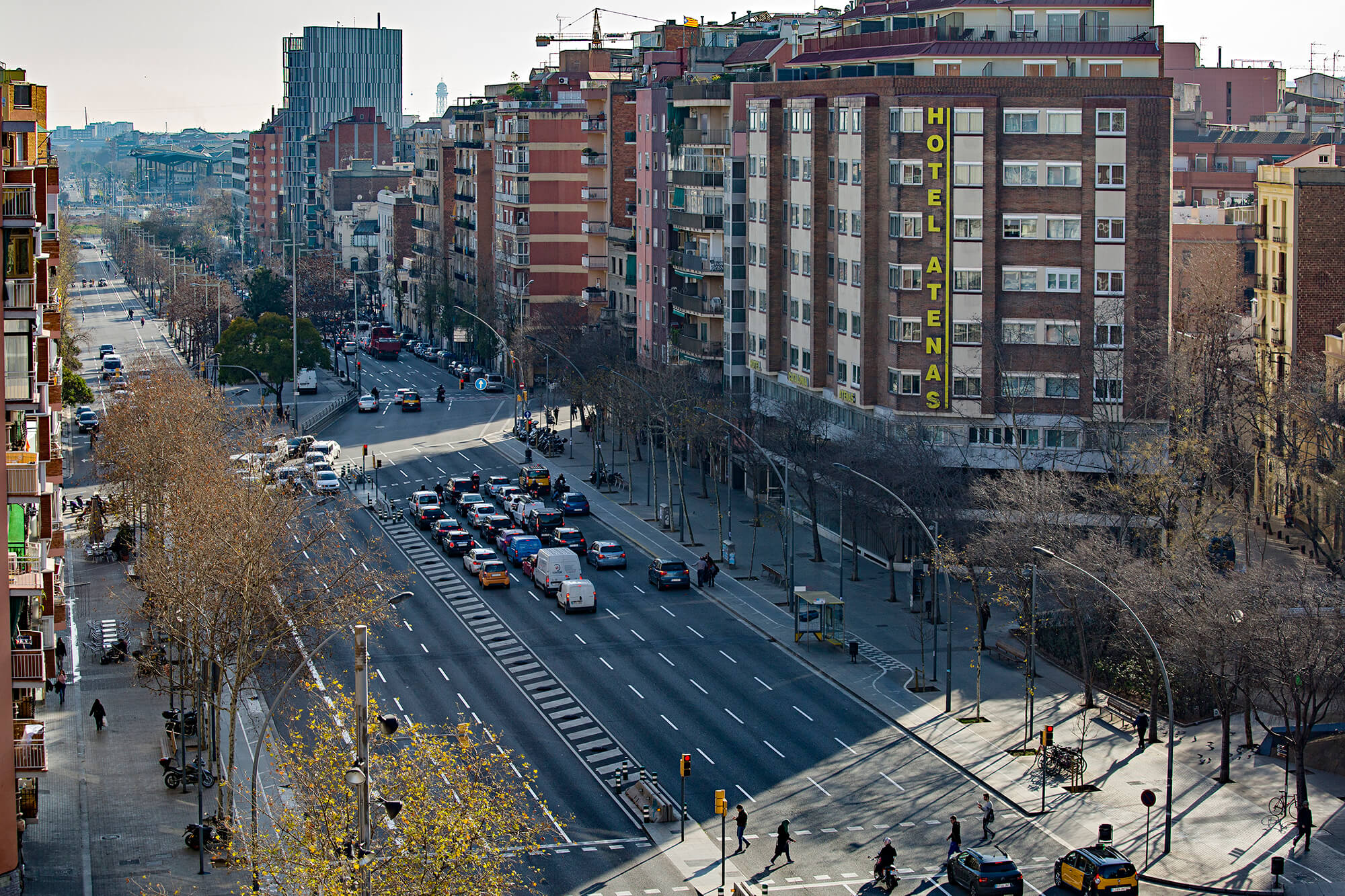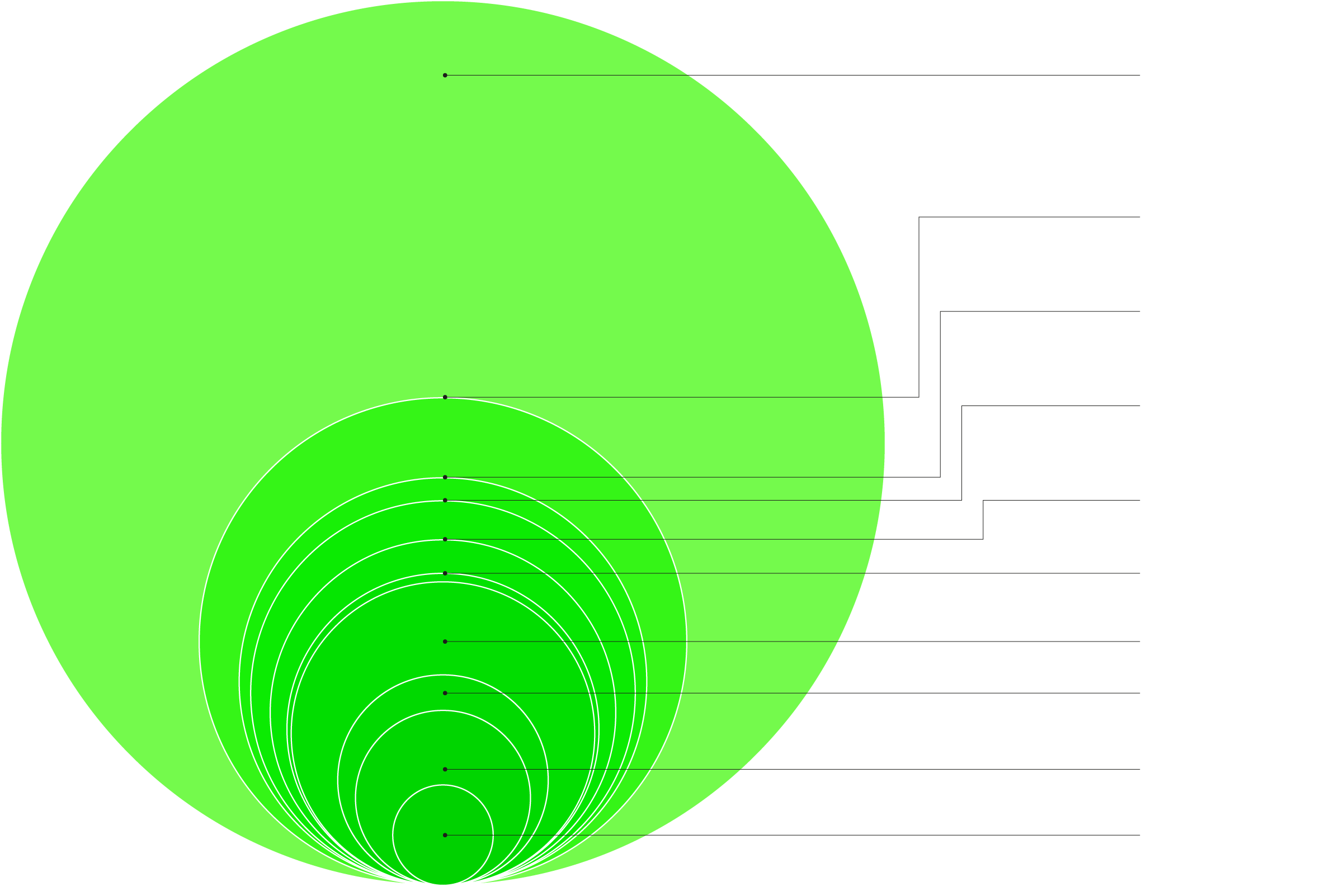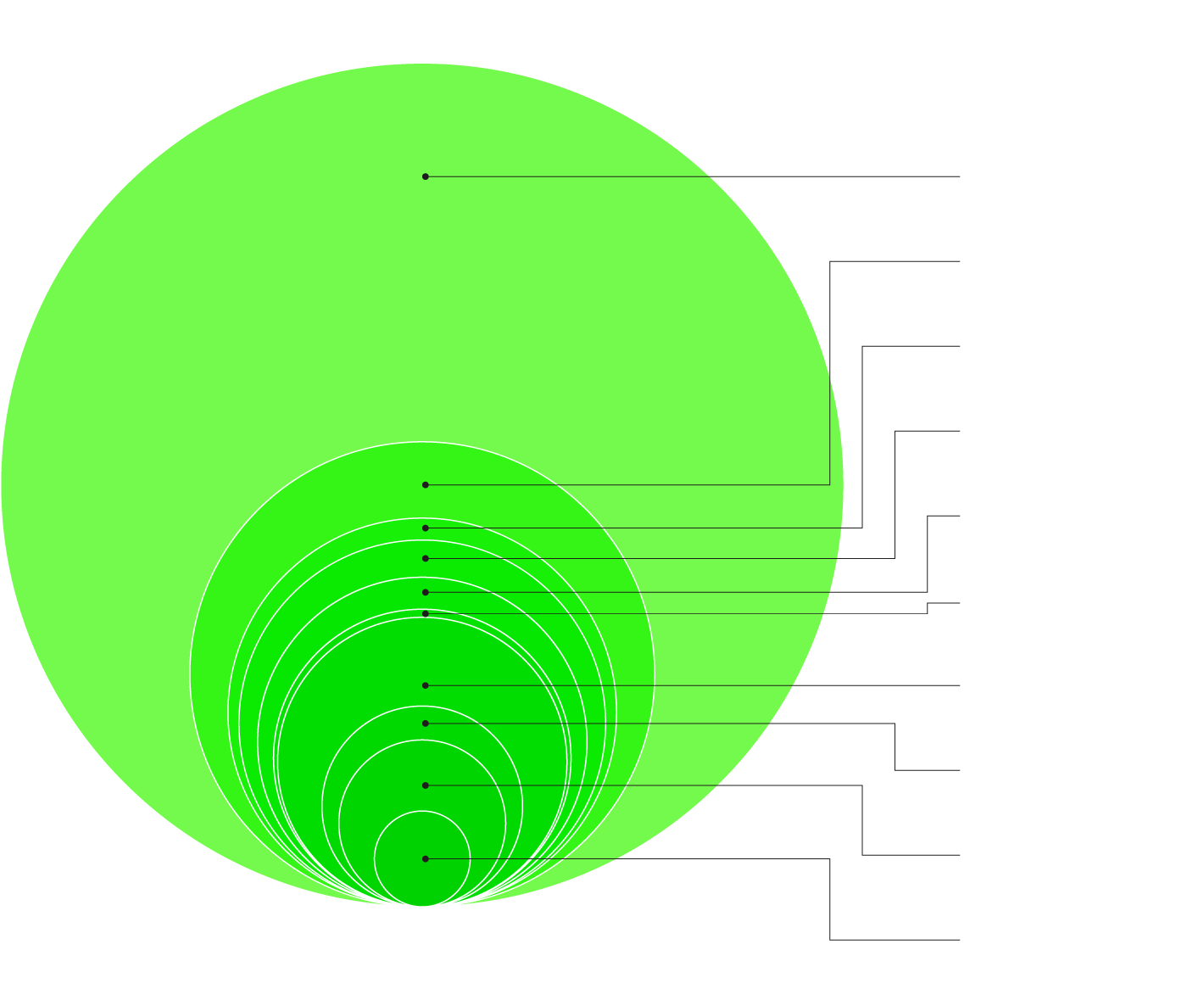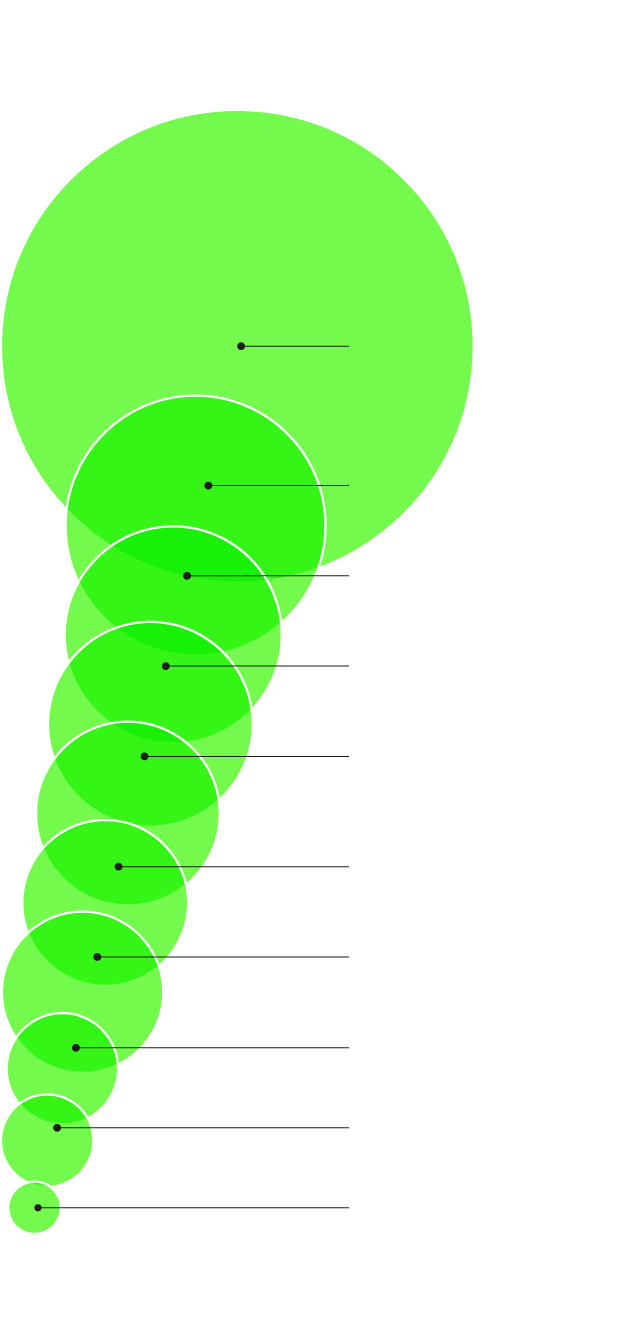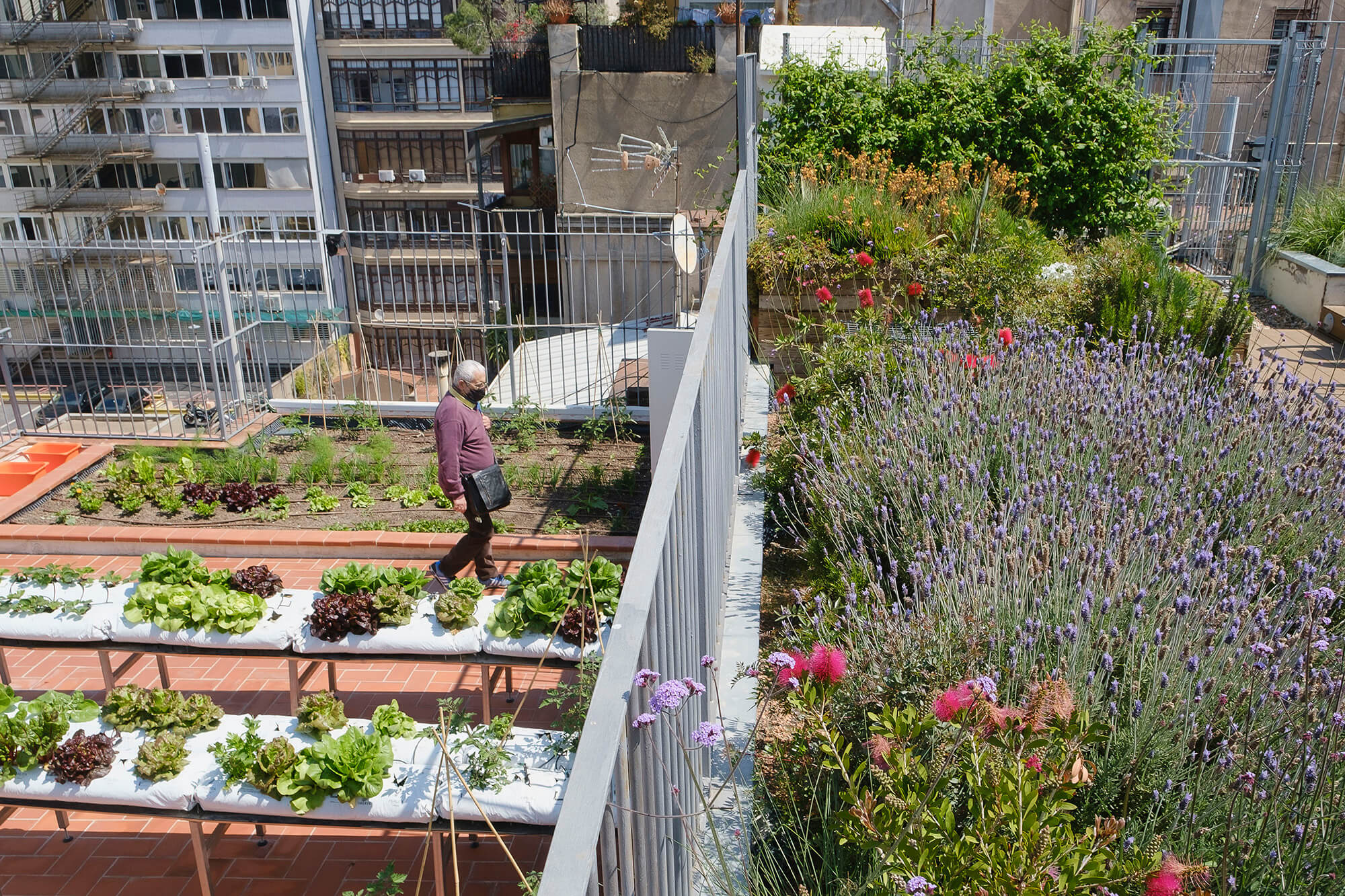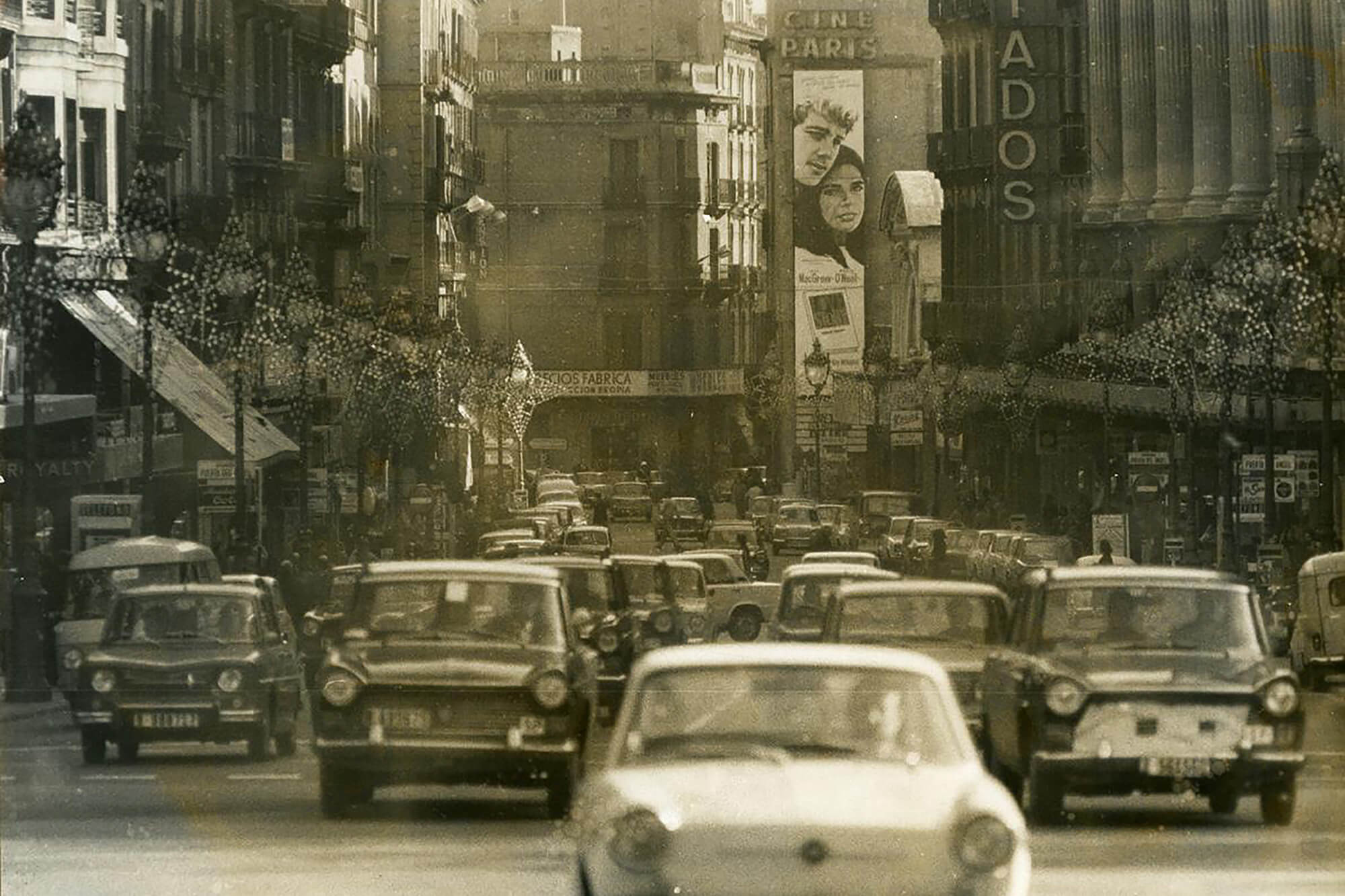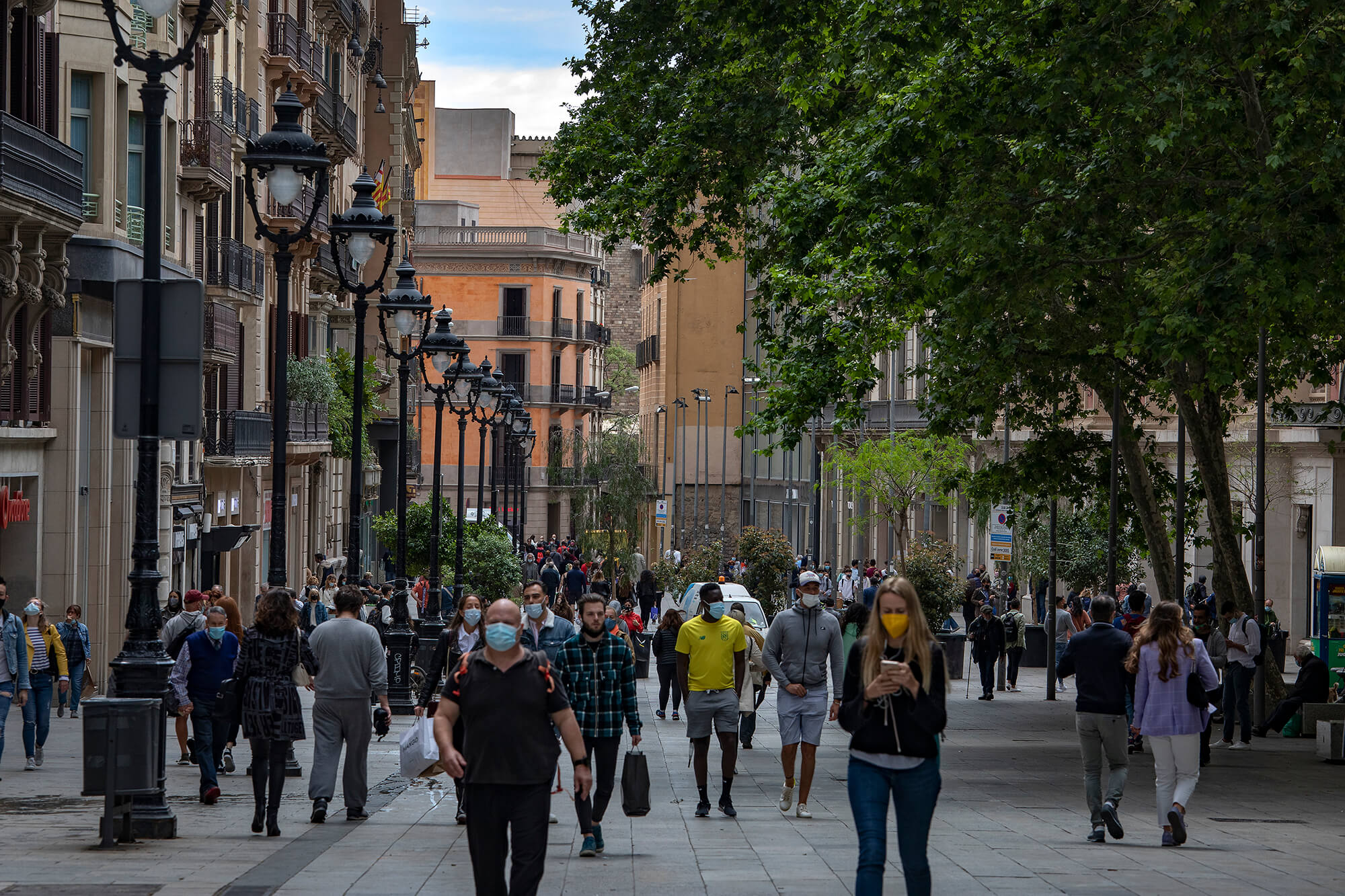This is the map of Barcelona's pre-pandemic 'superblocks"
The first 'superblock' was set up in Born in 1993 and didn't even receive this name
During the pandemic streets have been made pedestrian-friendly with tactical urbanism – Consell de Cent, Rocafort, Girona, Pelai and ronda Universitat–, pavements have been widened and new bike lanes have been built.
One of the most controversial interventions was on Via Laietana, where the pavement was widened by painting the road yellow. Many cyclists, however, have interpreted this as new bike lane. This is one of the streets where - once the final works are carried out - a new non-tarmacked street is to be introduced.
In the second phase, which has just started, two lanes were removed from Carrer Pelai and Ronda Universitat to give more space to pedestrians.
Thanks to all the interventions during the pandemic, pedestrians have recovered 32,850 sq. m. previously occupied by cars.
The next step is to do up the temporary fixes which have received so much criticism and find an aesthetic solution which meets the design standards the city has always had.
This is the project known as the 'Eixample superblock': permeable streets, squares at intersections and speed limited to 10 km/h.
In this term in office, the aim is to work on four streets –Consell de Cent, Rocafort, Borrell and Girona– and create four squares in their intersections.
In following years, the goal is to expand the pattern to 21 streets and 21 squares.
In order to avoid gentrification, no new business permits will be given to avoid bars and restaurants taking over these areas, as happened on Enric Granados and Blai.
Maintaining a balance between housing, office space and the service sector is key to progress towards a city where everything is 15 minutes away and travelling can be reduced.
Beyond 'superblocks', Barcelona is also pacifying streets. reducing the amount of lanes for traffic in other streets.
Together, all the interventions carried out in past six years, both tactical and permanent, as well as traffic-free streets at weekends, have liberated a space equivalent to 20 Eixample blocks from traffic.

